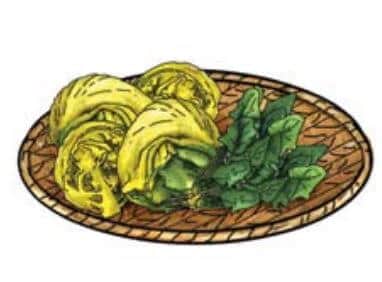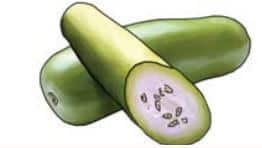15 Food types that will help your pigs grow faster and healthier – How to make your pigs grow faster
Creep Feed is the baby piglets’ first and most important dry food. It contains
20% protein that is highly fortified with milk by-products and is available in
small, chewable, highly palatable pellets for easy digestion.
A combination of protein source, milk replacer, vitamins, amino acids and rich feed ingredients makes this complete feed the ideal start for young healthy piglets. Feed ingredients in descending order: corn, soya bean meal, barley, wheat bran, vegetable protein, oilseeds extracts, fatty acids, feed phosphate, pig vitamins, and trace minerals.
Creep feed (about 20g per piglet per day) or a good home-made mixture with fine rice bran, broken rice and milled maize grains. Clean drinking water must always be available.
Traditional pig feeds
Feeds should meet the animal’s needs for maintenance, growth and reproduction. Good pig feed contains sufficient energy, protein, minerals and vitamins. Rice bran, broken rice, maize, soya-beans, cassava, vegetables and distillers’ residues are often used in pig feed.
Distillery waste is much appreciated in the traditional pig husbandry, especially for fattening pigs. It is advisable however, not to give this high valued feed to pregnant and lactating sows and to piglets and weaners because of the alcohol contents in the waste.
Also see how to weigh a pig with a rope
15 Types of feeds that will boost your pigs growth
- Rice Bran
- Broken Rice
- Maize
- Soybeans
- Wheat Bran
- Ipil – Ipil
- Root Crops
- Fruits
- Vegetables
- Green Soya Plant
- Banana Stem
- Pumpkin
- Bottle Ground
- Clover
- Alfalfa / Lucerne

Rice Bran: is very suitable for pig feeding. It contains 11% protein and can be used as the main ingredient. Rice bran can be mixed with other feeds to 30 – 45%. Rice bran can be kept no longer than 1 month because it can become mouldy.

Broken Rice: is very suitable for pig feeding. It can be mixed with other feeds up to 15 – 20%. Broken rice contains about 8% protein.

Maize: is a very good animal feed. It contains up to 65% carbohydrates and 9% protein. It can be mixed and cooked with other feeds, but not more than 40% in the mix ration

Soybeans: is a crop which has a high nutritional value and is very good for pig feeding. It contains 38% protein (=very high). It should be dried, milled or well cooked in combination with other feedstuff like rice bran, broken rice and maize

Wheat Bran is particularly rich in dietary fiber and contains significant quantities of Carbohydrate, protein, vitamins, and minerals. Wheat Bran and is widely used as a major component animal feed. it contain ; Protein 14% to 16%, Fat Max 9.5% , Crude Fibre 8.0 to 10.0% and carbohydrate up to 25%

Ipil – Ipil : Leucaena and Acacia are traditional, locally available tree-crops. The leaves are rich in protein. After drying, they can be mixed and fed to pigs with other feeds.

Root Crops: are being used for pig feeding, they can be mixed with other feeds up to around 10 – 20% (never more than 30%). First it should be peeled and washed and then sliced, dried and ground before use. It should not be fed to pigs as raw cassava with the skin, because of toxic substances. The sliced and dried cassava can be kept longer.

Fruits: Fruits damaged during transportation, storage and handling are used as supplementary feeds for pigs by boiling and mixing with other feeds such as rice bran, broken rice and maize. They can also be given fresh. Suitable fruits are: Banana, papaya, apple, pear, melons etc

Vegetables: Vegetables damage during transportation, storage and handling are used as supplementary feeds for pigs by boiling and mixing with other feeds such as rice bran, broken rice and maize. They can also be given fresh. Suitable vegetables are: cabbage, lettuce, spinach, morning glory, sweet potato vine, cola-cassia (needs boiling), pumpkin, guards, water hyacinth etc.

Green Soya bean plant: A reach source of vegetable protein

Banana Stem: The best way of feeding fresh green banana or plantain fruits is to chop them and sprinkle some salt on the slices since the fruits are very low in the in-organic nutrients. Cattle and pigs relish this material.

Pumpkin: Pumpkin is a good source of the vitamin B group, while a large proportion of these vitamins is lost during the preparation of the protein concentrate and isolates

Bottle gourd: Important nutritive value in 100 grams of bottle gourd like energy-12, moisture- 96g, protein-little , fat- little, carbohydrates- 2g, fiber- 1g, calcium- 20mg, Iron- little and Phosphorus-10 mg.

Clover: sodium content is lower (0.05% vs 0.15%). Crude protein levels in the DM are around 25%. Phosphorus is 0.3% dry matter digestibility is up to 75%.

Alfalfa: Low in fiber, Palatable to consume for animal, Easily digestible, It is the best nutritional package you can put into the rations feeding your livestock, dairy cattle, poultry or pig. Contains a blend of 47 nutritional elements one of nature’s most liberal balances of vitamins, minerals and amino acids
Feeding Forest Products
Pig feed can also be prepared with forest products (wild vegetables, wild bananas, wild cola – cassia etc). At the same time, food waste can be used (kitchen, restaurant, fruits, soup, rice, noodles etc). Growing legumes as feed for village pig production is having a big impact on the livelihoods of rural families in South Africa.
YouTube Channel: Farming South Africa
Facebook Page: Farming Life
Back To Home Page: Farming South Africa
Tags: Food types that will help your pigs grow faster, how to grow pigs faster, what food is good for pigs, pig farming, food that will boost pigs, pig feed, faster growth for pigs, how to make your pigs grow faster, feed that will grow your pig faster, food that will grow your pigs faster


Thanks very much for the information.
Thanks for sharing information
Good day iam living in phokwane village in limpopo nebo district I want to start farm with pigs I don’t know how to start
Manaswe tm